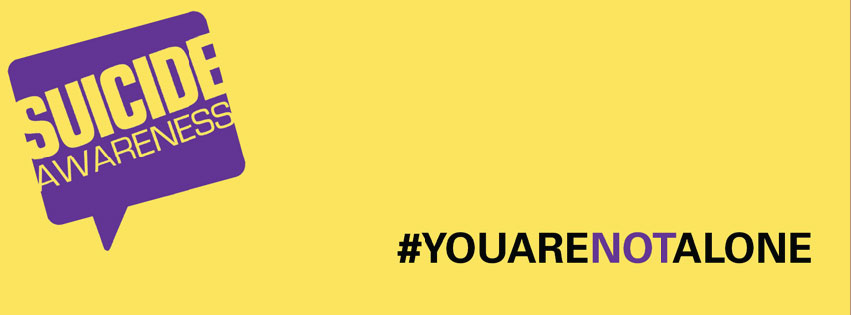
Now, more than ever, it is important to build community-wide strategies that foster and support mental health promotion and suicide prevention awareness, education, and intervention.
- In Canada, 12 people die by suicide each day[1]
- There are 4,500 deaths by suicide in Canada each year[1]
- From 2013-2022, the rate of self-harm emergency department (ED) visits increased by approximately 13.63% in Windsor-Essex County,[2] as per recent WECHU Data.
- There were 46 deaths caused by intentional self-harm in Windsor-Essex in 2022.[2]
- Suicide rates are approximately 3 times higher among men compared to women.[3]
- 12% of Canadians have had thoughts of suicide in their lifetime, and 4.2 % have planned suicide in their lifetime.[3]
Vulnerable Population Groups
- People With Previous Suicide Attempts - 10 to 15 percent of the people seen in a hospital emergency department for a suicide attempt will repeat the attempt in the 12 months following their discharge.[4]
- People with Pre-Existing Mental Health Conditions Or Illnesses - Research has found that 46% of people who die by suicide had a known mental health condition.[5]
- Middle-Aged Men (Self-Harm Mortalities) - The risk of self-harm mortality for men living in Windsor-Essex County was more than three times higher compared to women in the period between 2013 and 2022.[2] In particular, the greatest age specific self-harm mortality rate was identified in the 45-64 age group.[2]
- Women (Self-Harm Emergency Department Visits) - Although self-harm mortalities are higher in men than women, self-harm ED visits in Windsor-Essex County were on average five times higher among women than men annually from 2013-2022.[2]
- Indigenous Populations (First Nations, Métis & Inuit) - The rate of suicide is three times higher among the First Nations population (24.3 deaths per 100,000 per-years at risk), two times higher among the Métis population (14.7 deaths per 100,000 person-years at risk), and nine times higher among the Inuit population (72.3 deaths per 100,000 person-years at risk) in Canada than the non-Indigenous population (8.0 deaths per 100,000 per years at risk)[7].
- LGBTQ2S+ Populations - Youth who identify as lesbian, gay, or bisexual are five times more likely than non-lesbian, gay, or bisexual youth to consider suicide and seven times more likely to attempt suicide[7]. Of the 0.5% of the population who identifies as transgender[8], over 10% have reported recently attempting suicide and 22-43% have attempted suicide in their lifetime[9].
The WECHU remains committed to sustaining its annual efforts in promoting life and preventing suicide in Windsor-Essex County. Dedicating an entire month to suicide prevention awareness, education, and training reflects our community’s compassion and broader commitment to reducing incidents of self-harm and suicide in Windsor-Essex County.
For updated Windsor-Essex Self Harm statistics visit our Mental Health Dashboard.
References
[1] Public Health Agency of Canada. (2022). Suicide in Canada. Accessed 08 27 2024, from: https://www.canada.ca/en/public-health/services/suicide-prevention/suicide-canada.html
[2] Windsor-Essex County Health Unit (2024). Population Health Status Indicator Dashboards – Self-Harm in Windsor and Essex County. Accessed on 07 31 2024, from: https://www.wechu.org/reports/self-harm.
[3] Public Health Agency of Canada. (2023). Suicide in Canada: Key statistics [Infographic]. Government of Canada. https://www.canada.ca/en/public-health/services/publications/healthy-living/suicide-canada-key-statistics-infographic.html
[4] Mental Health Commission of Canada. Post-attempt follow-up and regular contact interventions. 2020. Accessed 08 27 2024 from: https://mentalhealthcommission.ca/wp-content/uploads/2021/09/Suicide_Care_Evidence_Brief_eng.pdf
[5] National Alliance on Mental Illness. (n.d.). Risk of suicide. Accessed 08 13 2024, from: https://www.nami.org/About-Mental-Illness/Common-with-Mental-Illness/Risk-of-Suicide
[6] Statistics Canada. (2019). Suicide among First Nations people, Métis, and Inuit (2011-2016): Findings from the 2011 Canadian Census Health and Environmental Cohort (CanCHEC). Accessed 08 27 2024 from https://www150.statcan.gc.ca/n1/pub/99-011-x/99-011-x2019001-eng.htm
[7] Suicide Prevention Resource Center. (2008). Suicide risk and prevention in gay, lesbian, bisexual, and transgender youth. Newton, MA: Education Development Center, Inc. Accessed 08 27 2024 from https://sprc.org/wp-content/uploads/2023/01/SPRC_LGBT_Youth.pdf
[8] Bauer, G., Zong, X., Scheim, A., Hammond, R., & Thind, A. (2015a). Factors impacting transgender patients discomfort with their family physicians: A respondent-driven sampling study. PloSONE 2015; 10(12): e0145046. Accessed 08 27 2024 from (add hyperlink) https://doi.org/10.1371/journal.pone.0145046
[9] Bauer, G., Scheim, A., Travers, R., & Hammond, R. (2015b). Intervenable factors associated with suicide risk in transgender persons. A respondents driven suicide risk sampling study in Ontario, Canada. BMC Public Health. DOI: 10.1186/s12889-015-1867-2. Accessed 08 27 2024 from https://bmcpublichealth.biomedcentral.com/articles/10.1186/s12889-015-1867-2.

